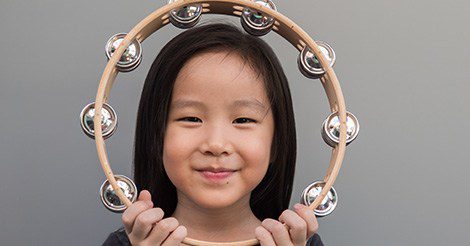 High, Middle & Low
High, Middle & Low
For this activity tell your child to put their hands on their shoulders and then raise their arms overhead and say, “This is your high space.” Then ask your child to touch their shoulders and then the area joining the leg to hip and say, “This is your middle space.” Finally, ask your child to touch the floor and then their hip joint and say, “This is your low space.” Demonstrate, using your own body, while providing directions and defining the meaning of high, middle, and low spaces. Using the tambourine, shake it in one of the spaces and ask your child to tell you which space you shook it in. If they get it correct say, “That is correct! Now it is your turn!” If they get it wrong say, “This is my middle space, so this must be….” Giving them another chance to say the correct answer. You can even prompt with the correct choices of “high or low.”
Materials:
- Tambourines or Boxes of Macaroni
- Radio or CD Player
Age-appropriate Adaptations:
- Two-year-olds—With a younger child you can use language cues if they do not know the vocabulary. While playing music, you can dance with the tambourine held high and say, “High.” Repeat this same process for middle and low, prompting your child to mimic your actions.
- Three-year-olds—Making a slow walking beat on a tambourine, ask your child to start at their high space and move their body to their low space. Change the speeds from slow to extremely fast using the tambourine. Have your child go from their high space to their low space in a jerky, twisted, or wiggly way.
- Four-/Five-year-olds—Provide simple music for your child to dance to while shaking a tambourine. Stop the music and tell your child to “freeze,” then ask them in what space is the tambourine located. Pose questions such as “How can you get across the room with your head in the middle space?” “How high can you make your body go?” “How low?”
Skills Supported:
- Physical: gross motor skills, awareness of body, speed and rhythm.
- Language & cognitive
